I wanted to make sure I left a little bit of a lip all around the area for the cowling to rest upon. To do that I made this little jig out of .020 styrene. It doesn't have to be exact so the slop in it doesn't hurt anything.
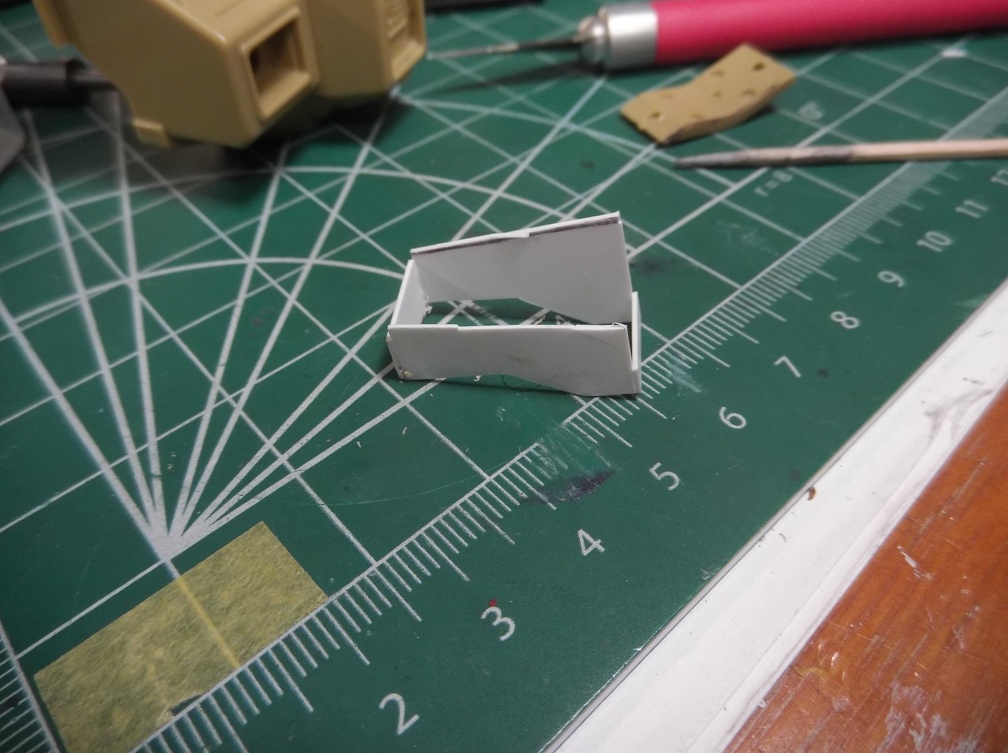
I had to cut the bottom to conform to the the shape of the shoulder to make it easier to scribe the lines.

As you can see my workbench is still a mess. I seem to naturally lean towards chaos in my workspace. :)
Quick check of the first section scribed. Yup there is a lip present. Success!
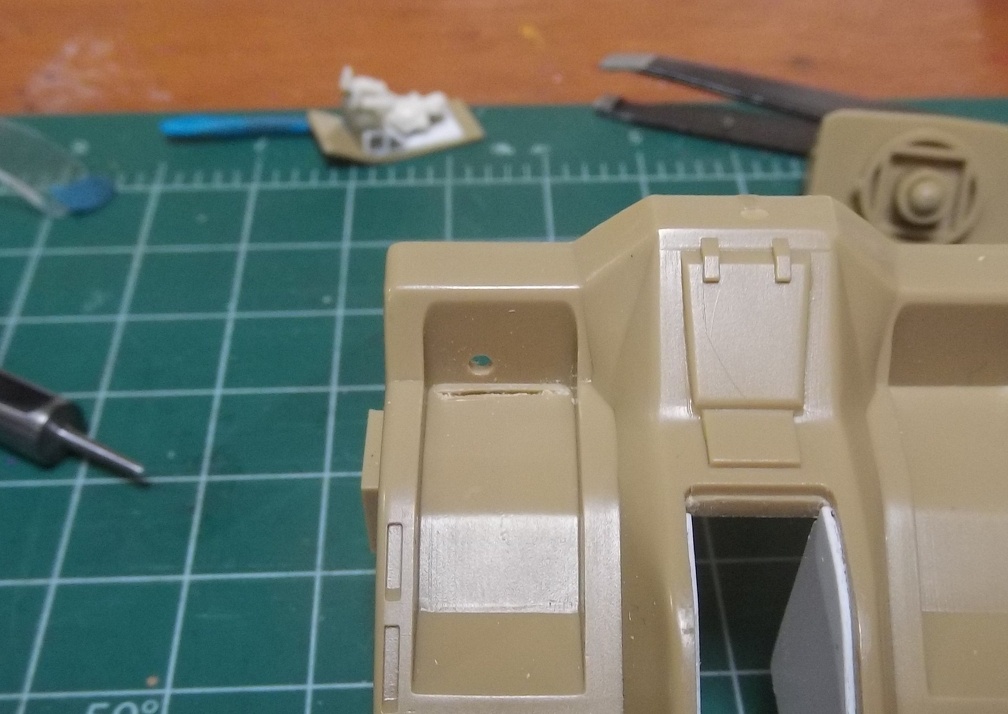
And just like that, one shoulder is done and ready to test fit the battery compartment.
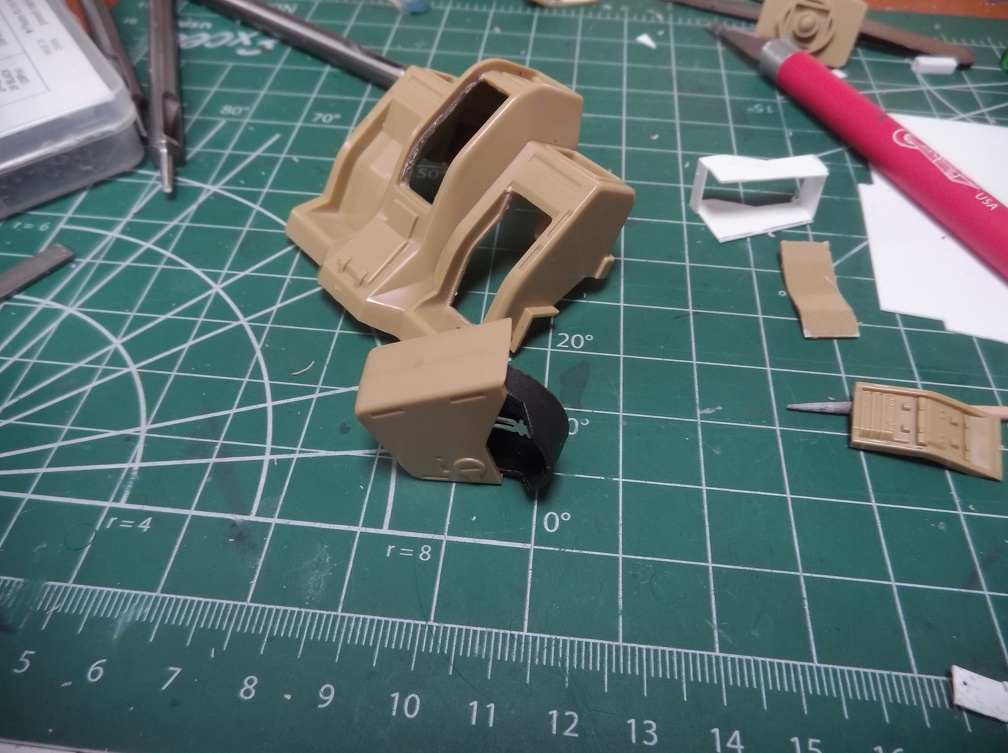
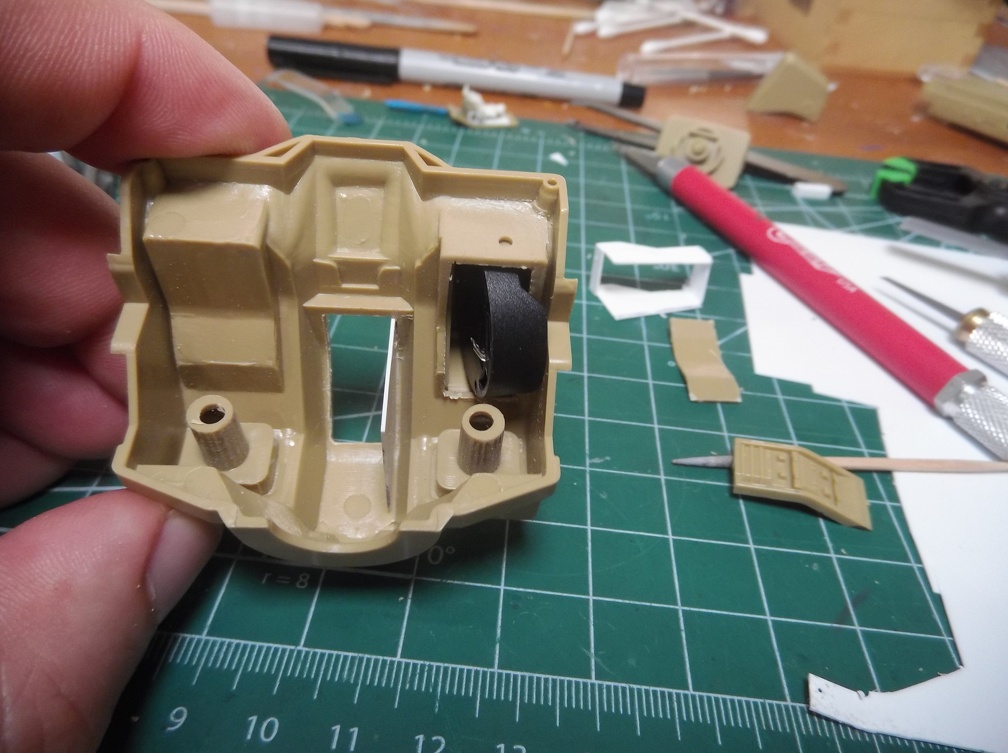
Looking good!
And if in the end I give up. There's these lovely little plates that can cover the holes. The other reason I wanted a lip.
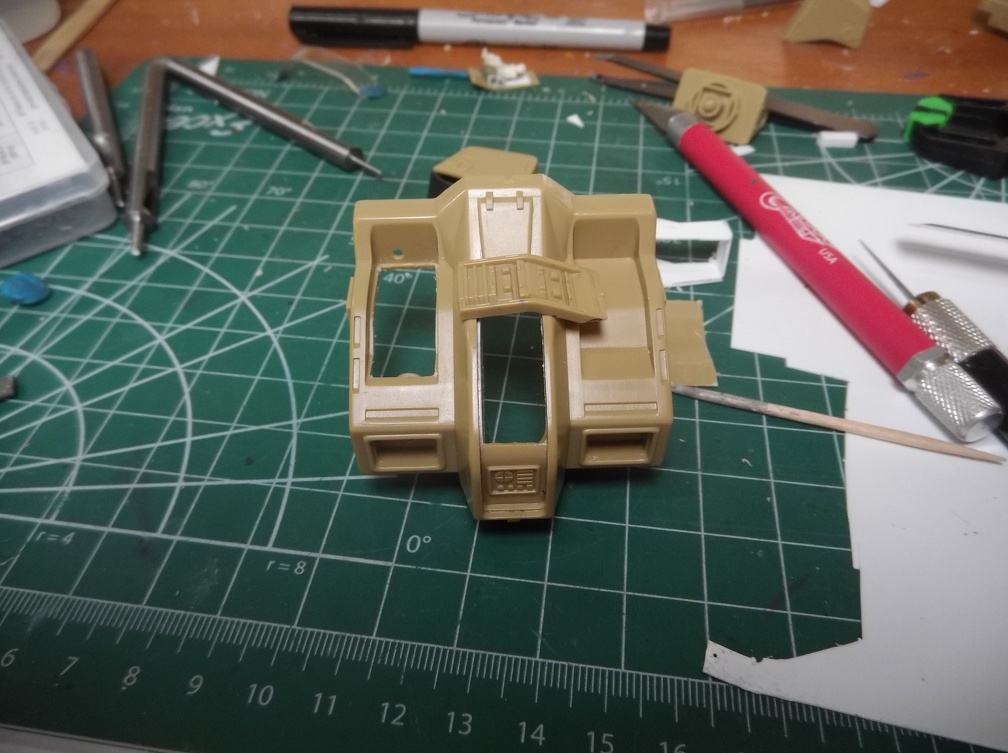
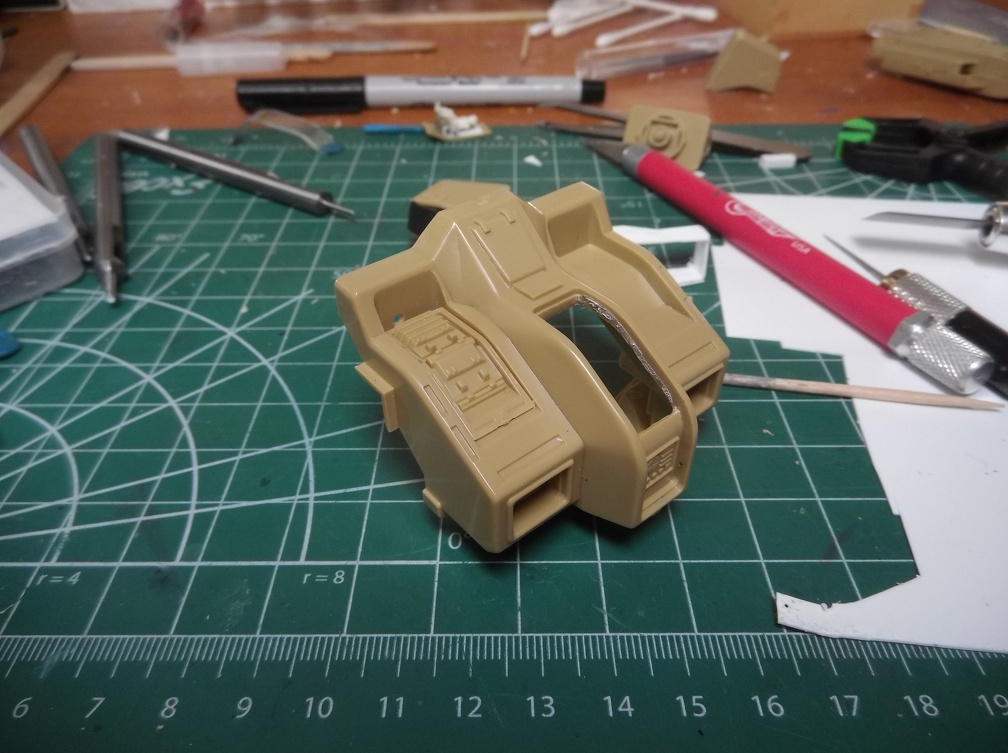
How it looks with both cowls in place.
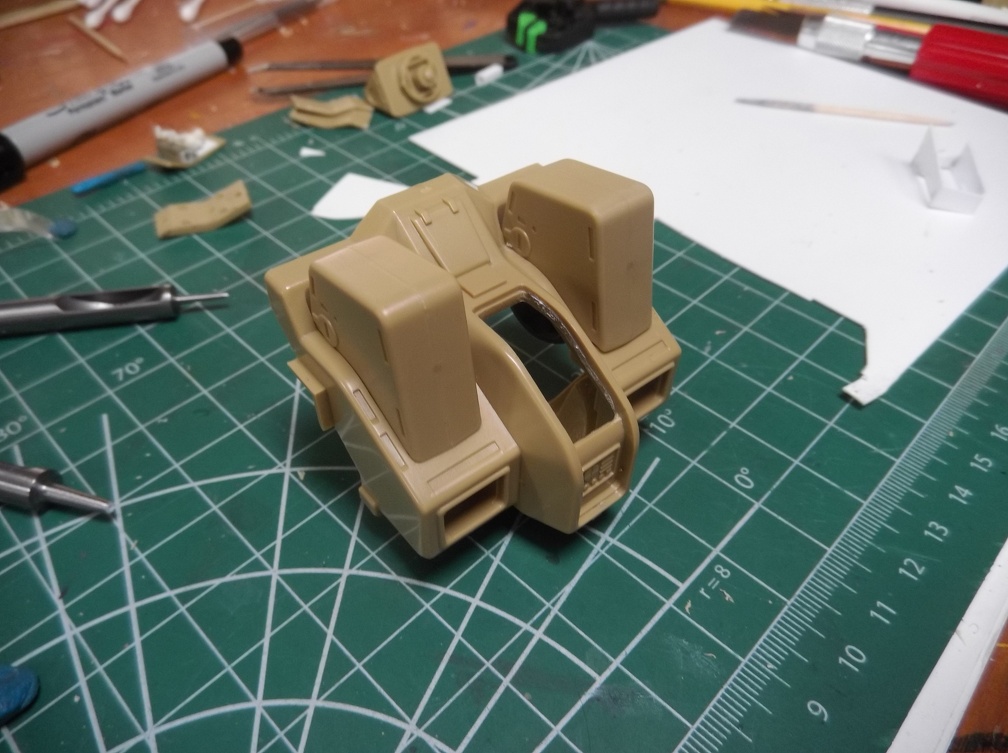
And hidden underneath the cowls, the battery holders!
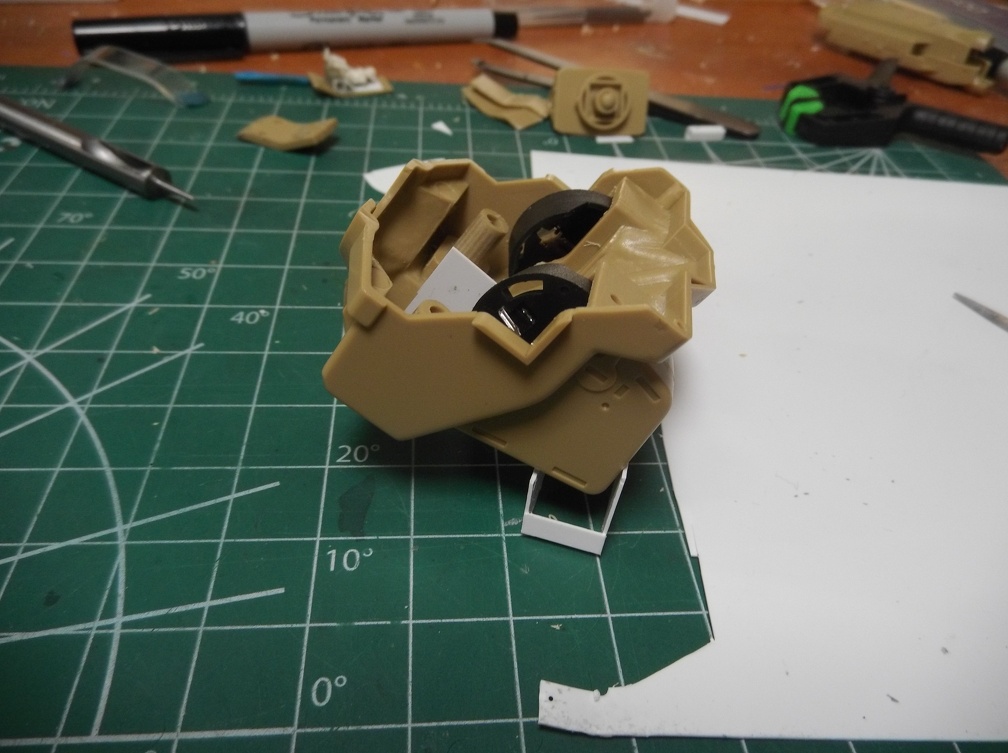
It will now be possible to store the batteries in the model and change them by lifting off the cowling. The battery clips are simple pressure fits so they'll be easy to put in and take out.
Prep for soldering everything together.
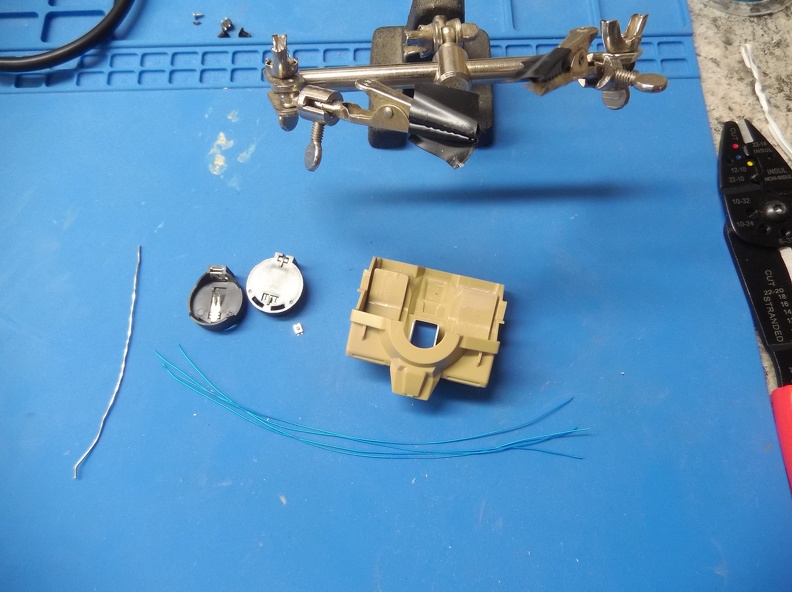
The kynar wire is the blue strands. It's very fine, very flexible, and easy to solder.
This should help with a sense of scale.
The tip of my soldering iron is larger than button!

No worries though. I've had lots of practice soldering small items when refurbishing Sega Game Gear portable consoles.
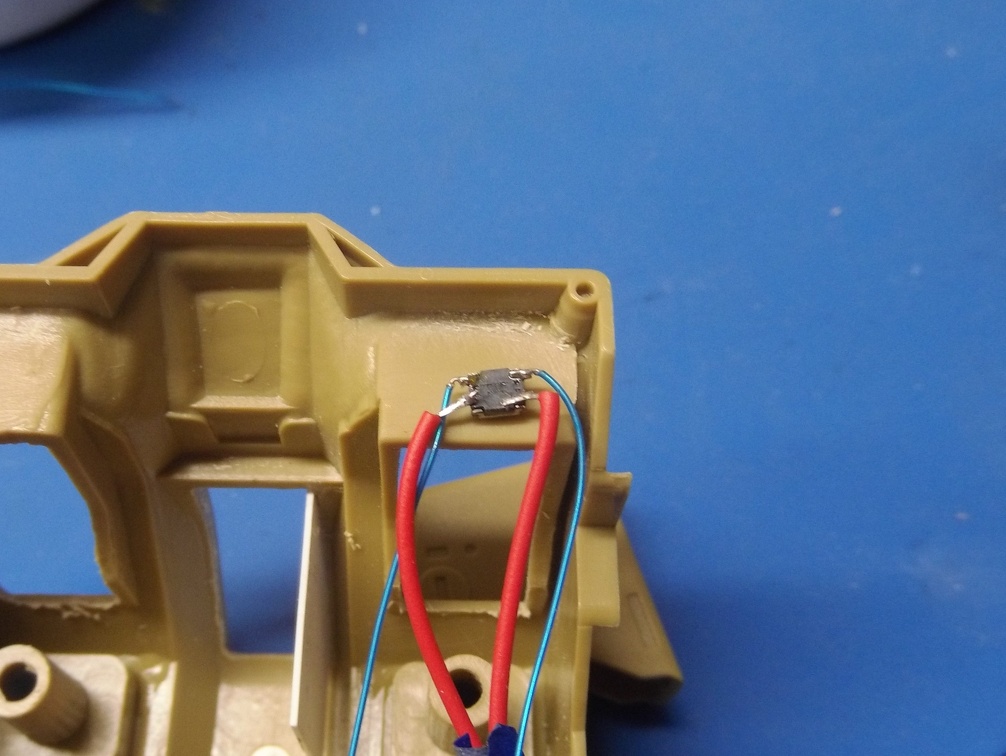
the blue kynar wires go to the positive terminals of the battery clips, the red wires are the positive leads on the LEDs. I'll be wiring the negative leads of the LEDs directly to the negative pole of the battery clips.
I tested the button and it works!
Then I noticed I soldered in the wrong color LED.
ROFL!
No worries, it's an easy fix. Just a couple of minutes of work to take care of. I'm thinking of adding a light to the cockpit and perhaps seeing if I can backlight the sensor array.
Depends upon my ability to secure the lights and the amount of space to accomodate them. Once that's ironed out I can add the screws to hold the button and then encase it in Apoxy sculpt. It will help secure the button and also ensure the leads don't accidentally break off of the switch.